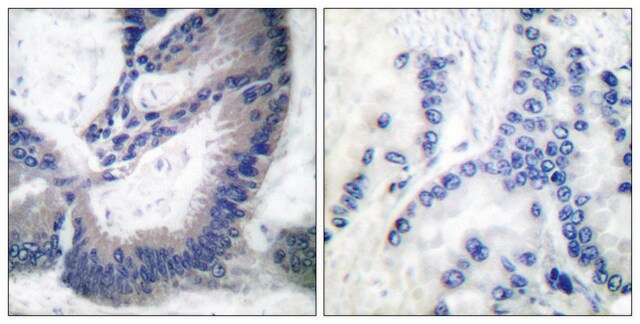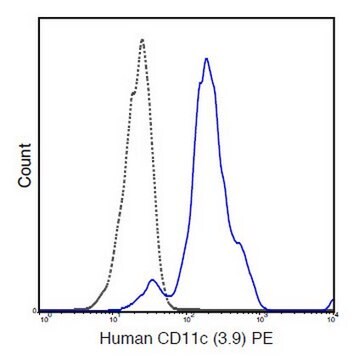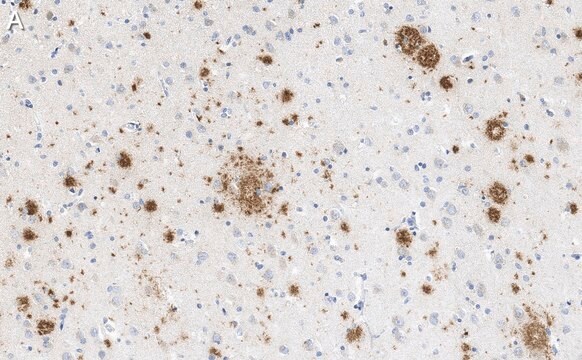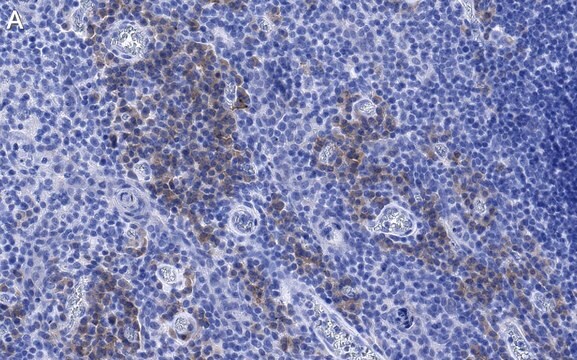CBL1512
Anti-Integrin αM [CD11b] Antibody, clone OX-42
clone OX-42, Chemicon®, from mouse
Synonim(y):
CD11b
About This Item
Polecane produkty
pochodzenie biologiczne
mouse
Poziom jakości
forma przeciwciała
purified antibody
rodzaj przeciwciała
primary antibodies
klon
OX-42, monoclonal
reaktywność gatunkowa
rat
opakowanie
antibody small pack of 25 μg
producent / nazwa handlowa
Chemicon®
metody
flow cytometry: suitable
immunohistochemistry (formalin-fixed, paraffin-embedded sections): suitable
immunoprecipitation (IP): suitable
izotyp
IgG2a
numer dostępu NCBI
numer dostępu UniProt
Warunki transportu
wet ice
temp. przechowywania
2-8°C
docelowa modyfikacja potranslacyjna
unmodified
informacje o genach
rat ... Itgam(25021)
Powiązane kategorie
Opis ogólny
Specyficzność
FUSION PARTNER: NSO myeloma cell line.
Immunogen
Zastosowanie
Cell Structure
Integrins
Postać fizyczna
Przechowywanie i stabilność
Komentarz do analizy
Brain tissue
Inne uwagi
Informacje prawne
Oświadczenie o zrzeczeniu się odpowiedzialności
Nie możesz znaleźć właściwego produktu?
Wypróbuj nasz Narzędzie selektora produktów.
Kod klasy składowania
10 - Combustible liquids
Klasa zagrożenia wodnego (WGK)
WGK 2
Temperatura zapłonu (°F)
Not applicable
Temperatura zapłonu (°C)
Not applicable
Certyfikaty analizy (CoA)
Poszukaj Certyfikaty analizy (CoA), wpisując numer partii/serii produktów. Numery serii i partii można znaleźć na etykiecie produktu po słowach „seria” lub „partia”.
Masz już ten produkt?
Dokumenty związane z niedawno zakupionymi produktami zostały zamieszczone w Bibliotece dokumentów.
Nasz zespół naukowców ma doświadczenie we wszystkich obszarach badań, w tym w naukach przyrodniczych, materiałoznawstwie, syntezie chemicznej, chromatografii, analityce i wielu innych dziedzinach.
Skontaktuj się z zespołem ds. pomocy technicznej![Anti-Integrin αM [CD11b] Antibody, clone OX-42 clone OX-42, Chemicon®, from mouse](/deepweb/assets/sigmaaldrich/product/images/658/396/c01fc480-dd82-42b9-9735-b53d97a11b17/640/c01fc480-dd82-42b9-9735-b53d97a11b17.jpg)
![Anti-Integrin αM [CD11b] Antibody, clone OX-42, FITC conjugated clone OX-42, Chemicon®, from mouse](/deepweb/assets/sigmaaldrich/product/images/132/674/40c8fa4e-4907-4e57-b0de-5e798ddbf1db/640/40c8fa4e-4907-4e57-b0de-5e798ddbf1db.jpg)







